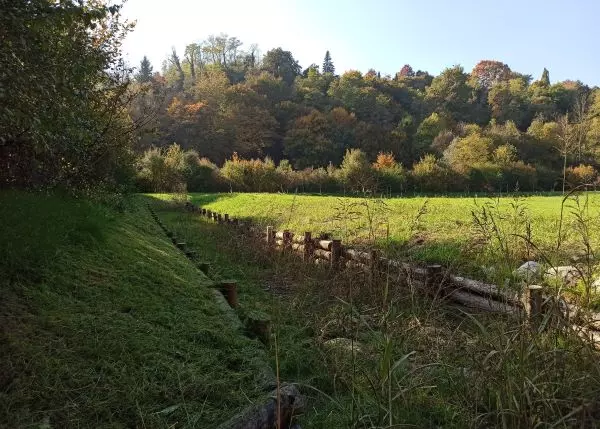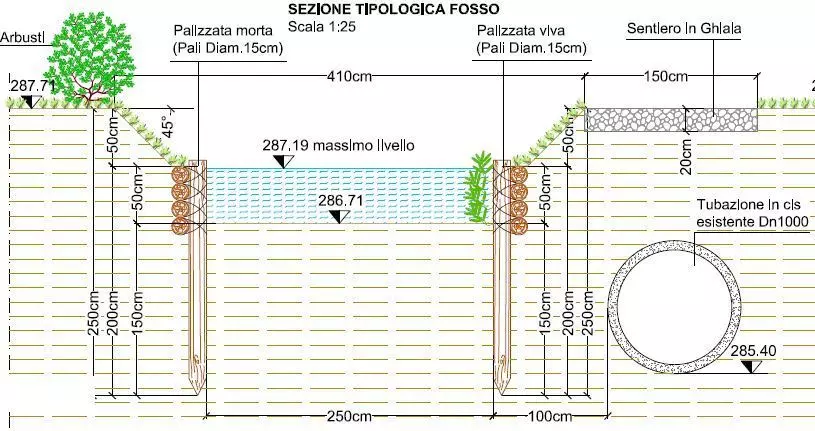Bio engineering
The bio engineering uses life or dead plants (or a portion of them) as well as other dead material (e.g., stones, tree trunk, wood, geotextile) to solve engineering issues: erosion control, soil stabilization and restoration. Therefore, the bio engineering can be defined as a toolkit with lo environmental impact, used to contemporarily improve the soil and the environment.
IRIDRA's projects adopt bio engineering everytime is needed a slope or soil stabilization, despite particular conditions requesting conventional engineering solutions

Advantages
- creation and/or restoration or natural or semi-natural areas
- soil consolidation and/or soil covering
- reduction of bank erosion
- protection to soil erosion
- hydrological advantages in terms of the rainfall infiltration
- improved drainage
- landscaping
- lower CAPEX and OPEX in comparison to conventional engineering solutions

Typological section of a swale for rainwater conveyed towards the dry detention basin of Carugo (CO, Italy) with bio-engineering protection, designed by IRIDRA.

